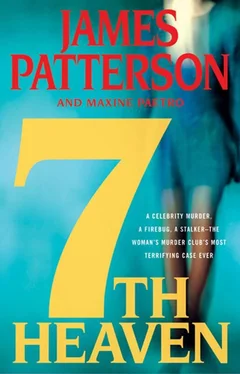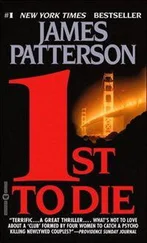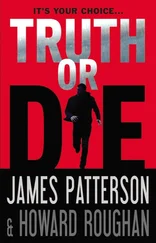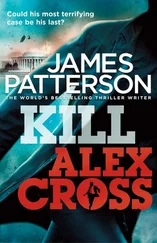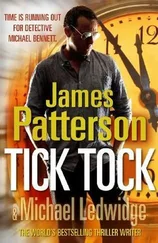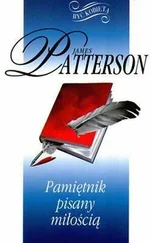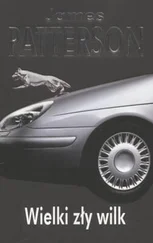I was looking at the title page of the book I held in my hands. Under the title were the names of the illustrator and the writer.
Hans Vetter and Brett Atkinson.
There was an icon under each of their names.
Hans Vetter was the pigeon and Brett Atkinson, a hawk.
BY FIVE THAT EVENING, Conklin and I were back at our desks in the squad room. Conklin clicked around the Internet, researching Atkinson and Vetter – and I couldn’t stop turning the pages of their novel.
I was hooked.
The drawings were stark black and white. The figures had huge eyes, and called to mind the manga style of violent borderline pornography imported from Japan. The dialogue was edgy, all-American slang punctuated by Latin sayings. And the story was actually crazy but somehow compelling.
In this book, “Pidge” was both the brains and the muscle. “Hawk” was the dreamer. They were depicted as righteous avengers, their mission to save America from what they viewed as an obscene fantasy world for the very rich. They referred to this American “piggishness” as 7th Heaven and described it as a never-ending spiral of gluttony, gratification, and waste. The Pidge-Hawk solution was to kill the rich and the greedier wannabes, to show them what real consumption was – consumption by fire.
Pidge and Hawk dressed all in black: T-shirts, jeans, riding boots, and sleek black leather waist jackets with logos of their name-birds front and back. Sparks flew from their fingertips. And their motto was “Aut vincere aut mori.”
Either conquer or die.
Hawk – the boy, not the character – had done both.
My guess? They never expected any of their victims to live long enough to give away their pseudonyms.
The motives and the methods the killers used were clearly drawn in their book, but it was all disguised as make-believe. And that was making me crazy with anger. Eight real people had died because of this arrogant nonsense, and we had virtually no evidence to prove that the real-life Hawk and Pidge were their killers.
I flipped the book to the back cover, scanned the rave reviews from social critics and the high-profile bloggers. I said to Rich, “The sickest part yet? This book has been picked up by Bright Line.”
“Hmmm?” Rich muttered, still tapping his keyboard.
“Bright Line is an indie studio,” I said. “One of the best. They’re turning this screed into a movie .”
“Brett Atkinson,” Rich said, “is a junior at Stanford U, majoring in English lit. Hans Vetter also goes to Stanford. He’s in the computer department. These creeps both live at home, only two blocks apart in Mountain View, a couple of miles from Stanford.”
Rich turned his computer monitor around, saying, “Check out Brett Atkinson’s yearbook photo.”
Brett Atkinson was Hawk, the boy Connor Campion had shot, the handsome, blond-haired boy with patrician features we’d seen in the hospital just before he died.
“And now,” Rich said, “meet Pidge.”
Hans Vetter was a good-looking tough, an illustrator, computer sciences major, now polishing his extracurricular activities as a serial killer.
“We will get warrants,” I croaked. I cleared my throat and said, “I don’t care who I have to beg.”
Rich looked as serious as I’d ever seen him.
“Absolutely. No mistakes allowed.”
“Aut vincere aut mori,” I said.
Rich smiled, reached over the desk, and bopped my fist. I called Jacobi, and he called Chief Tracchio, who called a judge, who reportedly said, “You want an arrest warrant based on a comic book?”
I barely slept that night, and in the morning Rich and I went to the judge’s chambers with 7th Heaven , the crime scene photos of the Malones, the Meachams, and the Jablonskys, and the morgue photos of the Chus. I brought Connor Campion’s statement that the boys who’d come to his house with a gun and fishing line had said their names were Hawk and Pidge, and I showed the judge their yearbook photos, captioned with their real names.
By ten a.m. we had signed warrants and all the manpower we’d need.
STANFORD UNIVERSITY, an A-list university for the best and brightest, is located 33.5 miles south of San Francisco, just off Highway 280, near Palo Alto.
Hans Vetter, AKA Pidge, spent his days in the video lab of the Gates Computer Science Building, a pale five-story, L-shaped building with a tiled roof and a rounded bulge at the entranceway. The labs and research offices were clustered around three major classrooms, and the building itself was isolated on an island of its own, separated from other school buildings by service roads.
Conklin and I had gone over the floor plans of the Gates Building with the U.S. marshals, who were coordinating with campus security. With windows on all sides of the building, the law enforcement team would be seen by anyone sitting near a window.
We parked our vehicles out of sight on the curve of a service road and moved in on foot. Conklin and I wore Kevlar under our SFPD jackets and had our guns drawn, but we were taking direction from U.S. marshals.
Adrenaline surged through me as we were given the signal to go. While others stood by side entrances, twelve of us charged up the front steps and entered the high-ceilinged lobby, then went to the stairwells and landings.
Pairs of marshals peeled off as we took each floor, clearing the open spaces, locking classrooms down.
My thoughts raced ahead.
I was worried that we were too loud, that we’d already been seen, and that if Vetter had smuggled a weapon past the metal detectors, he could take his classmates hostage before we could bring him down. Conklin and I reached the top-floor landing and marshals took up stances on both sides of the doorway to the video lab. Conklin peered through the sidelight of the door, then turned the knob, swung the door wide open.
Backed by Conklin and the U.S. marshals armed with automatic rifles, I stepped through the doorway and bellowed, “ FREEZE. Everyone stay still and no one will get hurt .”
A female student screamed, then the room erupted into chaos. Kids bolted from their stools and hid under workstations. Cameras and computers crashed to the floor. Glass shattered.
Kaleidoscopic images spun around me, and shrieks of terror ricocheted off the walls. The situation went from bad to out of control. I kept scanning the room, trying to pick out a stocky boy with long brown hair, square jaw, the eyes of a killer – but I didn’t see him.
Where was Hans Vetter?
Where was he?
THE LAB INSTRUCTOR stood transfixed at the front of the room, his blanched face going livid as shock turned to outrage. He was in his thirties, balding, wearing a green cardigan and what looked like bedroom slippers under the cuffs of his trousers. He shoved his hands out in front of himself as if to push us out of his classroom. He announced his name – Dr. Neal Weinstein – and demanded, “ What the hell? What the hell is this ?”
If it weren’t so damned terrifying, it would’ve been almost funny to watch Weinstein, armed with only his flapping hands and his PhD, face down adrenaline-pumped federal law enforcement officers primed to blow the place apart.
“I have a warrant for the arrest of Hans Vetter,” I said, holding both the warrant and my gun in front of me.
Weinstein shouted, “ Hans isn’t here .”
A white female student with black dreads, a ring in her lower lip, peeked out from behind an overturned table. “I spoke to Hans this morning,” she said. “He told me he was going away.”
Читать дальше
